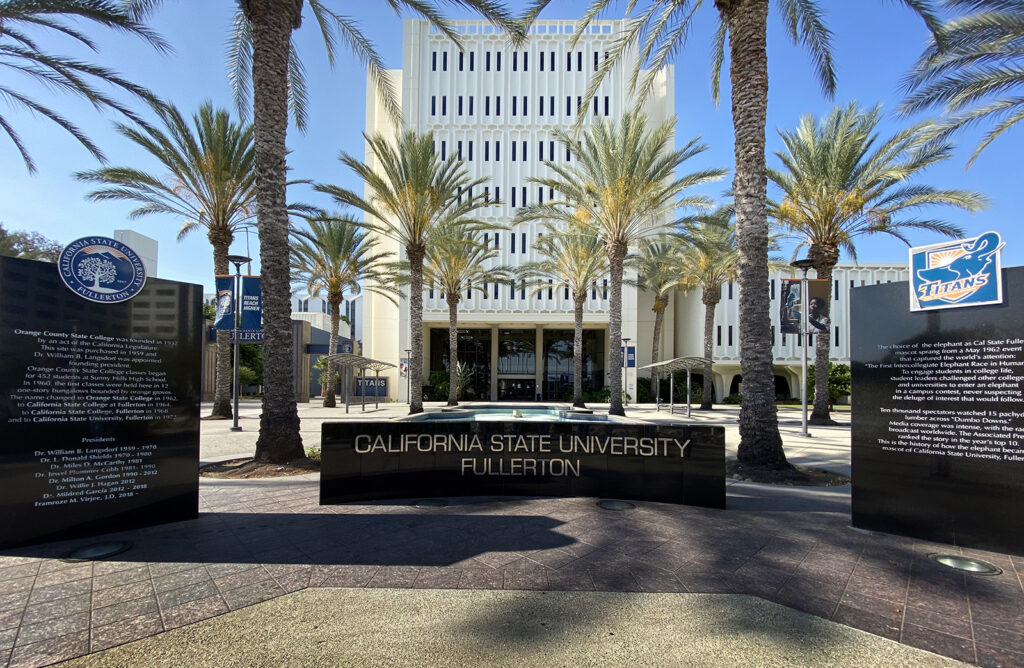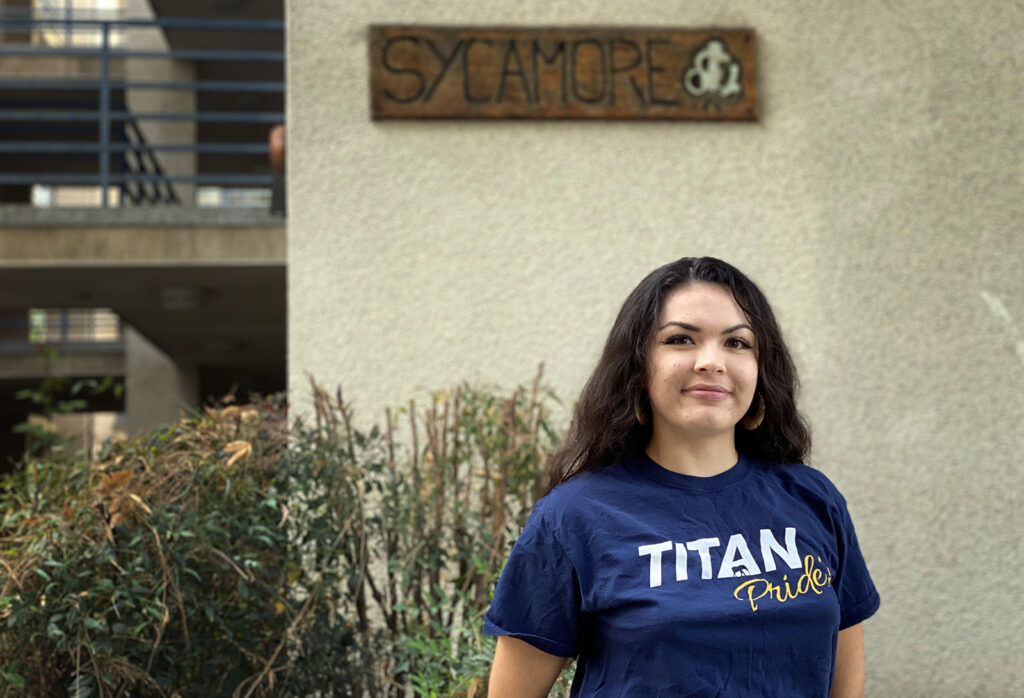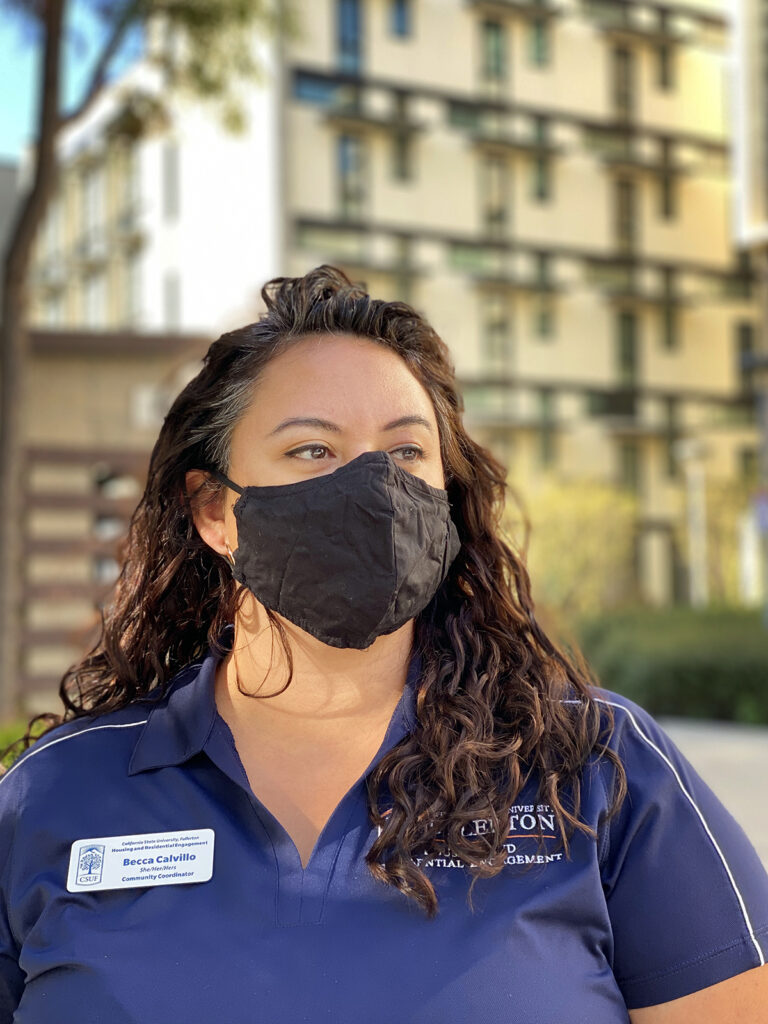Colleges created on-campus housing to bring students together. In a pandemic, schools are eliminating it to keep them apart.

FULLERTON, Calif. — For most college students, living on campus brings independence and an opportunity to live out the full range of the college experience. But as universities across the nation rush to comply with social distancing guidelines to prevent the spread of the still-raging coronavirus, far fewer students will get that experience in the fall.
Samantha Aguilar, a broadcast journalism student at California State University, Fullerton, had to move out of her on-campus apartment and back to her home in San Francisco with ‘ just days’ notice.
“For me, it was really hard because throughout all this, obviously there’s a pandemic, but my parents are a little bit older now, and my father has heart problems,” Aguilar said. “For me to ask him to help me move — I just didn’t want to risk his health.”
Instead, Aguilar had to move her belongings to her sister’s house about an hour away from campus. She had to move out on her own while continuing to manage her time with her school work.
“In the middle of it all, I had classes, and some professors didn’t understand,” Aguilar said. “Here, I am packing, trying to figure out what I can leave at my sisters [house] and still managing to keep up with all of my assignments. It was hard trying to balance it all out.”
Aguilar is among many CSUF students finding themselves without a place to live because of the pandemic. The university only plans to bring a small proportion of students back to campus for the fall semester because of rising coronavirus cases. School officials decided to continue virtual learning in early May, announcing that the majority of the fall classes will be taught online for all students. Face-to-face classes will account for a fraction of all courses offered — 239 in-person classes out of 10,367 total fall courses, or 2 percent of all offerings, according to university records.
It’s not just California. As the school year begins, students around the country are grappling with hard choices amid spiking COVID-19 cases.
In Virginia, George Mason University announced that it will reduce student housing by 25 percent — roughly 4,500 beds for a student population of 37,000. The University of Maryland is also reducing the number of students living on campus and providing reduced seating capacity for dining halls.
“We expect most students will not be on campus during the fall semester,” CSUF President Fram Virjee wrote in an email distributed to the university. “As such, on-campus housing will be reduced significantly.”

It’s not clear how these changes will affect the university’s budget or future housing prices for students as room and board rates are approved on annual bases. When the Latino Reporter asked, officials referred questions to Larry Martin, executive director of housing and residential engagement.
“We will have to take things into account [for the future], but our goal is to make housing affordable for all students,” Martin said.
A housing community that once sheltered over 2,000 students is now predicted to only provide bed spaces for about 560 residents, though Martin said that number is subject to change.
Priority will be given to students who have in-person classes, express a need for housing, or may have housing insecurity. Students will be placed in apartment-style living areas and be provided single bedroom access and possibly a single bathroom access depending on occupancy, Martin said. These new arrangements, he said, were created in response to social distancing orders issued by California Governor Gavin Newsom, who is requiring students to have their own living space instead of sharing a single room with roommates.
Before the pandemic, housing options included residence halls for first time freshmen and single and shared apartments for continuing, transfer or graduate students.
Martin said all housing students will be offered double-apartment board rates, which are the lower of the room rates, as well as access to either a continuous or per-meal dining plan. Prior to the pandemic, double-apartments were designed to house six apartment-mates with two per bedroom in three bedrooms. The deal also included access to a kitchen, two bathrooms, a dining room, and a living room.
Although students will have access to the lowest room rates, the double apartment-style rate increased compared with the last academic year.
According to CSUF’s housing website, a double apartment with an 80-meal plan was $11,664 last academic year. That same room option will now be $11,916 for housing students this upcoming academic year. The cost difference is $252.
Aguilar hoped to be able to live on campus once again because she has two face-to-face classes. However, she will be unable to due to the price increase and fear of having to move out in the middle of the semester once again.
“It’s unclear how they are going to continue to follow precautions and provide on-campus housing,” Aguilar said. “It’s a little too risky to me, and they did raise the prices for on-campus housing this year and it didn’t make sense to me to pay that much money for only two face-to-face classes.”
With fewer on-campus residents, student employment within housing will also be reduced. The university usually employs 44 resident advisors, but that won’t happen during the fall 2020 semester.
That means some students who had been selected to work as an RA won’t actually get to do so. Now everyone selected is on a wait list as the school determines who among them has the most need to live on campus.
Beyoncé Diaz, a second-year resident and RA candidate, said she needs to live on campus to focus better on her studies. Her home life is hectic — both her parents are essential workers, and she has three younger siblings who demand much of her attention.

“Whatever time I have left over, I use to focus on my studies, which is frustrating because then I am doing a bad job on my homework,” Diaz said. “I would much prefer to go back to campus to be able to focus.”
Mona Makam, another RA candidate who is also a second-year resident, wants to know what safety precautions will be implemented for those who do end up living on campus.
“Housing is also in the dark with everything changing,”Makam said, “(School officials) have told us the bare minimum. I wish there was more concern on student safety or that they would communicate with us what their plans are.”
Asked to address those concerns, Martin said “CSUF housing is working closely with environmental health and safety who is also working with local health and safety agencies to create safety training and following local and state guidelines.”
Training for RAs and other housing staff will be virtual to reduce in-person interaction. Along with mask, social distancing and hand-washing guidelines from the Centers for Disease Control and Prevention, the university will implement other restrictions to ensure safety, Martin said, such as a ban on residential guests.
Dining options for students are unclear at the moment. The Gastronome, which is the on-campus dining hall, has offered students buffet-style eating options, however that is subject to change in order to follow state and local guidelines.
“We’re working with Aramark as a worldwide organization, they have a very robust safety plan, so we’re working with them to provide food in a safeway,” Martin said, “Looking at ways to do takeout but still providing and requiring a meal plan.”
With so many limitations to school services, social engagement is being stripped away from students’ college experience, leaving school officials scrambling to make the campus feel like home.

Becca Calvillo, a Housing and Residential Engagement Community Coordinator, said the school is trying to tailor school amenities to each student.
Students can attend virtual workshops or meetings with other students who share the same major or college. RAs are also conducting one-on-one meetings to get to know their residents more.
“We’re turning most of these programming opportunities into virtual experience but with some personal interactions,”Calvillo said. “If we have a room decoration workshop they can pick up the items in person and then through Zoom, we’ll create them together.”
Reduced personal interaction can trigger mental health problems in students, Calvillo said.
“Being away from family, adapting and learning new modes of education — there is also going to be an uptick in mental health concerns,” Calvillo said.
Martin said school employees are trying to figure out how to address that.
“Our primary goal is safety,” Martin said. “We want to encourage students to be flexible and thoughtful, and view information sent out by housing so students are aware of what this unique experience will be like.”
Kimberly Cruz is studying journalism at California State University, Fullerton. She has worked on the broadcast team as a presenter, producer, and reporter on Fullerton’s new Titan Sports broadcast. Reach her at kdianacruz@csu.fullerton.edu and on Twitter @kcruznews.